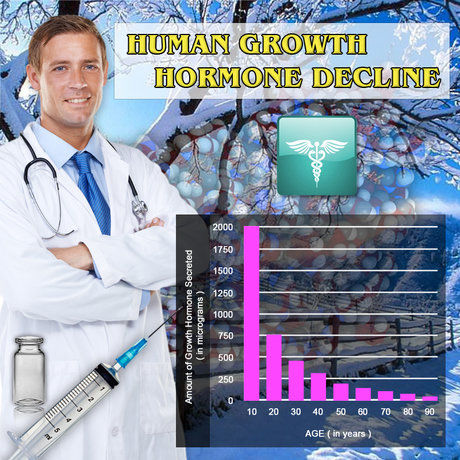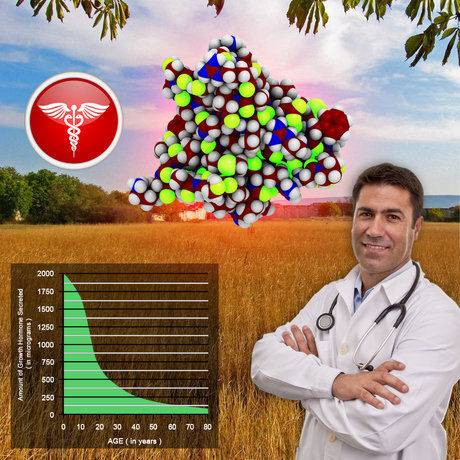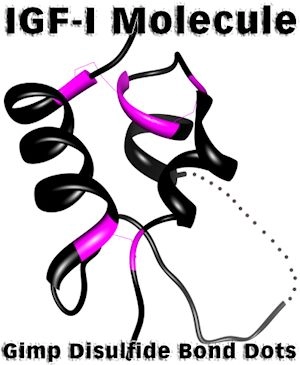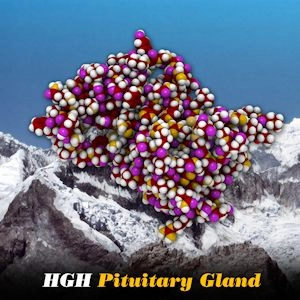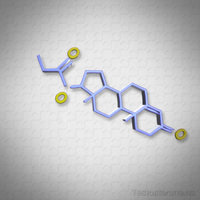Video Link: https://vimeo.com/295614512
Video Download: Gh Rh Antagonists May Be Beneficial In Treating Malignant Melanomas
Video Stream: Gh Rh Antagonists May Be Beneficial In Treating Malignant Melanomas
Malignant melanoma is a dangerous form of skin cancer, and, if allowed to spread too far, can become very vicious and deadly.
Researchers have spent their entire careers researching malignant melanoma in an attempt to improve outcomes for the patient and increase the chances that they can recover from the disease and return to a healthier life.
New evidence suggests that a particular class of medications, known as GH-RH Inhibitors, may be able to enhance the effective treatment of this form of skin cancer.
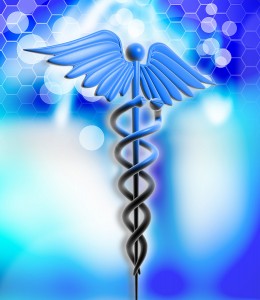 What is a GH-RH Inhibitor?
What is a GH-RH Inhibitor?
A GH-RH Inhibitor is a medication or chemical which suppresses the production of GH-RH by the Hypothalamus.
GH-RH is the precursor to Human Growth Hormone and is released to stimulate the pituitary to produce HGH for the body.
Unfortunately for patients with some types of cancer, individual cancer cells have GH-RH receptor sites and can feed off of GH-RH to grow.
As such, there is a lot of research today dedicated to exploring different potential GH-RH Inhibitors in an attempt to increase the effectiveness of current cancer treatments.
What is Malignant Melanoma?
Melanoma is a form of skin cancer that occurs when particular skin cells, known as Melanocytes, malfunction. Both men and women get melanoma with similar frequency, but the locations where these tumors develop are different.
In men, melanomas most commonly appear on the back, whereas in women, these cancers generally occur on the legs. If caught before they grow into the deeper layers of the skin, then in most cases, cancer can simply be excised.
On the other hand, if the Melanoma spreads into the deeper layers of the skin, it becomes much, much more challenging to treat, and therefore becomes much, much more dangerous. The most common treatments for Melanomas that come back or spread are radiation and chemotherapy.
Overall, the survival rate for Melanomas that are caught early is around 91%, but those not found early are much, much more dangerous.
The survival rate drops significantly if Melanoma has been allowed to spread. Although Melanoma is one of the rarer forms of skin cancer, it boasts the highest mortality rate and is responsible for 3/4s of the deaths associated with skin cancer.
Around the world, 232,000 patients were diagnosed with Melanoma last year, and 55,000 died as a result of the condition.
 In a recent study, published in the medical journal, Cell, three different medications were used in an in vitro environment to establish their potential efficacy vs. melanoma.
In a recent study, published in the medical journal, Cell, three different medications were used in an in vitro environment to establish their potential efficacy vs. melanoma.
Researchers used cultured lines of human melanoma and treated them with the three GH-RH Antagonists.
One of the three potential GH-RH Antagonists, known as MIA-690, was found to be highly effective at inhibiting the growth of the melanoma, and its effectiveness depended upon the dose that was administered.
MIA-690 was able to reduce the increase by 1/3rd when applied at 10M, and by 1/5th when administered at a 5M dose.
After proving that the Anti-GH-RH Treatment could work, they then used the treatment on lab rodents, which had xenografted melanoma, and the procedure was found to slow down tumor growth by more than 70% among these subjects.
Based on the results of this study, all signs show that GH-RH Antagonist treatment can likely be used effectively as a part of a Comprehensive Cancer Therapy Regimen.
What Does This Study Have to Do with HGH and GH-RH Therapy?
When considering HGH Therapy or Sermorelin Acetate Therapy, it is essential to understand exactly how these treatments work, and what the risks and drawbacks of HGH Restoration may be.
There is no evidence that Human Growth Hormone, GH-RH, or GH-RH Derivatives cause cancer, but there is evidence that these treatments can exacerbate existing cancer, which is why HGH Therapy is not intended for patients that have active cancer or a recent history of cancer.
When on HGH or Sermorelin, it is essential to keep an eye on one's health and make  regular visits to a general practitioner.
regular visits to a general practitioner.
Generally, patients are evaluated before treatment to ensure the safety of the treatment, as well as whether a patient can benefit from Sermorelin or GH-RH.
After six months of Hormone Therapy Treatment, patients return for further evaluation, in which they are examined to make sure that the treatment is working as intended with no side-effects.
HGH and Sermorelin are highly beneficial medical treatments that can help patients with HGH Deficiency restore their health and vitality.
But it is still a medical treatment, and all medical procedures have their drawbacks and benefits. Both HGH and GH-RH Antagonists have a place in medical treatment.
HGH and Sermorelin are used to preserve the benefits of enhanced cellular metabolism promoted by healthy HGH Levels, and GH-RH Antagonists will soon play a role in the treatment of medical conditions such as Melanoma, in which elevated Cellular Metabolism can be problematic.
Most cancer treatments work by starving cancer, which, in many cases, also puts a lot of negative pressure on the healthy tissues of the body as well.
The goal of cancer treatment is to target cancerous tissues as effectively as possible while having a minimal impact on healthy tissues.
impact on healthy tissues.
Human Growth Hormone is incredibly vital for maintaining the optimal health of a patient, but in the case of cancer, HGH can become problematic, because the same cellular processes that benefit the body as a result of Human Growth Hormone also help the growth and metastasis of cancer.
So in this sense, GH-RH Antagonists work by depriving the body of the Human Growth Hormone that it needs to function at its best to preserve the health and the life of the patient.
Should This Study Turn A Patient Off to HGH Therapy?
No. This study emphasizes the importance of participating in Physician-Monitored HGH Therapy. Using HGH without the help of a medical professional can be potentially dangerous, and it is essential to be evaluated for health and any signs of cancer before starting therapy.
Reference
Contact Us For A Fast And Professional Response

- Sermorelin — HGH Injections Versus Sermorelin and Testosterone Therapy Programs [Last Updated On: February 20th, 2025] [Originally Added On: September 20th, 2020]
- Sermorelin with GHRP-6 - Hormone Doctor San Diego [Last Updated On: February 18th, 2025] [Originally Added On: October 28th, 2020]
- Get a Quick and Easy Blood Test to Look For Hormone Deficiencies [Last Updated On: September 23rd, 2024] [Originally Added On: November 7th, 2020]
- Beneficial Sermorelin Injections for Men and Women: The Next Generation of HGH Restoration [Last Updated On: November 14th, 2024] [Originally Added On: December 27th, 2020]
- What are the Benefits of Sermorelin Acetate Injections versus HGH Injections? [Last Updated On: April 21st, 2025] [Originally Added On: January 14th, 2021]
- High-Intensity Interval Training to Improve HGH Levels, Hormone Balance, and Health [Last Updated On: November 15th, 2024] [Originally Added On: January 17th, 2021]
- Sermorelin Therapy 21st Century Injectable Human Growth Hormone Restoration [Last Updated On: October 7th, 2024] [Originally Added On: February 16th, 2021]
- Maximizing Your Sermorelin Acetate Program with Sunshine and Walking [Last Updated On: February 19th, 2025] [Originally Added On: February 18th, 2021]
- Now Is The Time To Learn About The Magic Of Sermorelin Injections [Last Updated On: April 27th, 2025] [Originally Added On: March 2nd, 2021]
- Sermorelin vs. Human Growth Hormone Therapy [Last Updated On: March 15th, 2025] [Originally Added On: April 26th, 2021]
- Does Sermorelin Work? [Last Updated On: October 9th, 2024] [Originally Added On: May 4th, 2021]
- Buy Sermorelin -- What to do When Sermorelin Arrives in the Postal Mail [Last Updated On: February 16th, 2025] [Originally Added On: May 9th, 2021]
- HGH Secretagogues, Sermorelin Injections and Growth Hormone Releasing Hormone (Hypothalamus) - Video [Last Updated On: February 18th, 2025] [Originally Added On: May 11th, 2021]
- Age Management with Sermorelin Injection Treatment [Last Updated On: March 7th, 2025] [Originally Added On: May 23rd, 2021]
- Stem Cells Found For The First Time In The Pituitary [Last Updated On: September 26th, 2024] [Originally Added On: May 24th, 2021]
- Omnitrope is a Great Option for Men or Women with HGH Deficiency [Last Updated On: January 12th, 2025] [Originally Added On: June 14th, 2021]
- The Three Best Ways to Increase Your HGH Levels [Last Updated On: January 13th, 2025] [Originally Added On: July 2nd, 2021]
- HGH Injections on the Run [Last Updated On: February 4th, 2025] [Originally Added On: May 10th, 2023]
- All You Need to Know About HRT & Osteoporosis [Last Updated On: December 23rd, 2024] [Originally Added On: June 16th, 2023]
- Unlocking the Elixir of Youth: Revealing the Untold Potential of Sermorelin [Last Updated On: February 25th, 2025] [Originally Added On: February 25th, 2025]
- Regaining Youthfulness: Sermorelin’s Role in Revitalizing Your Body’s Growth Hormone [Last Updated On: February 26th, 2025] [Originally Added On: February 26th, 2025]
- Unlocking the Secret to Youthfulness: Unraveling the Impact of Sermorelin in Anti-Aging Therapy [Last Updated On: February 27th, 2025] [Originally Added On: February 27th, 2025]
- Transforming Medical Science: Sermorelin's Ascendancy In The Modern World [Last Updated On: February 28th, 2025] [Originally Added On: February 28th, 2025]
- Revitalizing Elixir of Life: An Exploration into the Efficacious Role of Sermorelin in Reigniting the Body's Innate Growth Hormone [Last Updated On: February 28th, 2025] [Originally Added On: February 28th, 2025]
- Unveiling the Future of Therapeutics: A Comprehensive Examination of Sermorelin Benefits [Last Updated On: March 1st, 2025] [Originally Added On: March 1st, 2025]
- Exploring Chronological Rejuvenation: The Role of Sermorelin in Anti-Aging Medicine [Last Updated On: March 2nd, 2025] [Originally Added On: March 2nd, 2025]
- Exploring Sermorelin: A Natural Alternative to Synthetic Growth Hormone Therapy for Enhanced Vitality and Reduced Side Effects [Last Updated On: March 3rd, 2025] [Originally Added On: March 3rd, 2025]
- Exploring Sermorelin's Role in Enhancing Vitality Among American Men [Last Updated On: March 4th, 2025] [Originally Added On: March 4th, 2025]
- Exploring Sermorelin Therapy for Aging: Benefits for American Males [Last Updated On: March 5th, 2025] [Originally Added On: March 5th, 2025]
- Exploring Sermorelin Therapy for Hormonal Imbalance in Aging Men [Last Updated On: March 6th, 2025] [Originally Added On: March 6th, 2025]
- Unlocking Sermorelin: The Natural Path to Enhanced Growth Hormone Levels in Men [Last Updated On: March 7th, 2025] [Originally Added On: March 7th, 2025]
- Unlocking the Anti-Aging Potential of Sermorelin: Benefits for Aging American Males [Last Updated On: March 8th, 2025] [Originally Added On: March 8th, 2025]
- The Regenerative Power of Sermorelin for Male Tissue Regeneration and Healthy Aging [Last Updated On: March 9th, 2025] [Originally Added On: March 9th, 2025]
- Sermorelin Therapy: Enhancing Growth Hormone for American Males' Health and Vitality [Last Updated On: March 9th, 2025] [Originally Added On: March 9th, 2025]
- Unveiling the Multifaceted Health Benefits of Sermorelin for American Men [Last Updated On: March 11th, 2025] [Originally Added On: March 11th, 2025]
- Exploring the Biochemical Wonders of Sermorelin: A Deep Dive for American Males [Last Updated On: March 12th, 2025] [Originally Added On: March 12th, 2025]
- Unlocking Vitality: The Role of Sermorelin in Boosting Natural HGH Levels in American Men [Last Updated On: March 13th, 2025] [Originally Added On: March 13th, 2025]
- Unleashing Vitality: The Transformative Power of Sermorelin in American Males [Last Updated On: March 15th, 2025] [Originally Added On: March 15th, 2025]
- Exploring the Therapeutic Potential of Sermorelin in Accelerating Recovery for American Males [Last Updated On: March 15th, 2025] [Originally Added On: March 15th, 2025]
- Sermorelin: Enhancing Growth and Vitality in American Males Through Peptide Therapy [Last Updated On: March 16th, 2025] [Originally Added On: March 16th, 2025]
- Sermorelin: Enhancing Health and Vitality in American Males Through Regenerative Medicine [Last Updated On: March 17th, 2025] [Originally Added On: March 17th, 2025]
- Sermorelin: Enhancing Longevity and Quality of Life in American Males [Last Updated On: March 17th, 2025] [Originally Added On: March 17th, 2025]
- Sermorelin: Enhancing Vitality and Health in American Males Through Hormonal Optimization [Last Updated On: March 18th, 2025] [Originally Added On: March 18th, 2025]
- Sermorelin: Enhancing Vitality and Health in American Males Through Regenerative Medicine [Last Updated On: March 18th, 2025] [Originally Added On: March 18th, 2025]
- Sermorelin Therapy: Personalized Approach to Enhancing Male Health and Vitality [Last Updated On: March 18th, 2025] [Originally Added On: March 18th, 2025]
- Sermorelin: Enhancing Vitality and Health in Aging American Men [Last Updated On: March 18th, 2025] [Originally Added On: March 18th, 2025]
- Maximizing Sermorelin Benefits: Diet, Exercise, Sleep, and Stress Management for American Males [Last Updated On: March 21st, 2025] [Originally Added On: March 21st, 2025]
- Sermorelin: Enhancing Health and Vitality in American Males Through Regenerative Medicine [Last Updated On: March 21st, 2025] [Originally Added On: March 21st, 2025]
- Sermorelin: Enhancing Vitality and Cellular Health in American Males [Last Updated On: March 21st, 2025] [Originally Added On: March 21st, 2025]
- Sermorelin: Enhancing Body Composition in American Males Safely and Effectively [Last Updated On: March 22nd, 2025] [Originally Added On: March 22nd, 2025]
- Sermorelin: Enhancing Vitality and Health in Aging American Males [Last Updated On: March 22nd, 2025] [Originally Added On: March 22nd, 2025]
- Sermorelin: Enhancing Vitality and Body Composition in American Males - Evidence and Risks [Last Updated On: March 22nd, 2025] [Originally Added On: March 22nd, 2025]
- Sermorelin vs. HGH Therapy: Benefits and Risks for American Males' Health [Last Updated On: March 22nd, 2025] [Originally Added On: March 22nd, 2025]
- Sermorelin: Enhancing Tissue Regeneration in American Males [Last Updated On: March 22nd, 2025] [Originally Added On: March 22nd, 2025]
- Sermorelin: Enhancing HGH for American Males' Health and Vitality [Last Updated On: March 23rd, 2025] [Originally Added On: March 23rd, 2025]
- Sermorelin: Enhancing Growth Hormone for American Males Across All Ages [Last Updated On: March 23rd, 2025] [Originally Added On: March 23rd, 2025]
- Sermorelin Benefits for American Men: Sleep, Stress, Growth, and Vitality Enhancement [Last Updated On: March 24th, 2025] [Originally Added On: March 24th, 2025]
- Sermorelin: Enhancing Energy, Mood, and Metabolism in American Males [Last Updated On: March 24th, 2025] [Originally Added On: March 24th, 2025]
- Sermorelin: A Natural Anti-Aging Solution for American Males [Last Updated On: March 24th, 2025] [Originally Added On: March 24th, 2025]
- Sermorelin: Enhancing Muscle Repair and Performance in American Males [Last Updated On: March 24th, 2025] [Originally Added On: March 24th, 2025]
- Sermorelin: Enhancing Regeneration in American Males for Health and Vitality [Last Updated On: March 24th, 2025] [Originally Added On: March 24th, 2025]
- Sermorelin: Enhancing Vitality and Graceful Aging in American Men [Last Updated On: March 24th, 2025] [Originally Added On: March 24th, 2025]
- Sermorelin: Enhancing Vitality and Health in American Males Through GH Stimulation [Last Updated On: March 24th, 2025] [Originally Added On: March 24th, 2025]
- Sermorelin: Enhancing Post-Surgical Recovery for American Males [Last Updated On: March 25th, 2025] [Originally Added On: March 25th, 2025]
- Sermorelin: Enhancing Men's Hormonal Health Holistically [Last Updated On: March 25th, 2025] [Originally Added On: March 25th, 2025]
- Sermorelin's Molecular Mechanisms and Health Benefits for American Males [Last Updated On: March 25th, 2025] [Originally Added On: March 25th, 2025]
- Sermorelin: Boosting Energy and Fat Loss in American Males [Last Updated On: March 25th, 2025] [Originally Added On: March 25th, 2025]
- Sermorelin Therapy Benefits for American Males: Muscle, Bone, Cognitive, and Metabolic Health [Last Updated On: March 25th, 2025] [Originally Added On: March 25th, 2025]
- Sermorelin: Enhancing Performance and Health in American Males [Last Updated On: March 25th, 2025] [Originally Added On: March 25th, 2025]
- Sermorelin: Transforming Chronic Fatigue into Fitness for American Men [Last Updated On: March 25th, 2025] [Originally Added On: March 25th, 2025]
- Sermorelin: Boosting Metabolism and Vitality in American Males [Last Updated On: March 26th, 2025] [Originally Added On: March 26th, 2025]
- Sermorelin: Enhancing Skin, Hair, and Vitality in American Men [Last Updated On: March 26th, 2025] [Originally Added On: March 26th, 2025]
- Sermorelin: Enhancing Vitality and Health in Aging American Men [Last Updated On: March 26th, 2025] [Originally Added On: March 26th, 2025]
- Sermorelin: Enhancing GH Production and Health in American Males [Last Updated On: March 26th, 2025] [Originally Added On: March 26th, 2025]
- Sermorelin: Enhancing Hormonal Health and Vitality in American Men [Last Updated On: March 26th, 2025] [Originally Added On: March 26th, 2025]
- Sermorelin: Enhancing Vitality and Health in American Males Through GH Stimulation [Last Updated On: March 27th, 2025] [Originally Added On: March 27th, 2025]
- Sermorelin: Revolutionizing Anti-Aging for American Males with GH Enhancement [Last Updated On: March 27th, 2025] [Originally Added On: March 27th, 2025]
- Sermorelin Therapy: A Promising HRT Option for Aging American Males [Last Updated On: March 27th, 2025] [Originally Added On: March 27th, 2025]
- Sermorelin: Enhancing Recovery and Performance in American Male Athletes [Last Updated On: March 27th, 2025] [Originally Added On: March 27th, 2025]
- Sermorelin Therapy Enhanced by Diet and Exercise for American Males' Health [Last Updated On: March 27th, 2025] [Originally Added On: March 27th, 2025]

